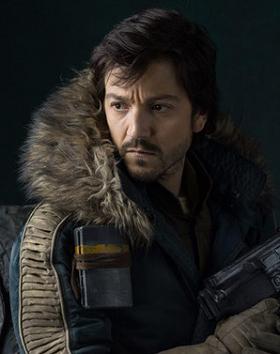Andor, the Spectacle of Star Wars for Adults

Diego Luna as Cassian Andor in Rogue One (2016)
November 17, 2022
(This article contains Spoilers for episodes one through ten of Andor)
When you think of Star Wars, what target demographic comes to mind? Obviously, kids would come to mind, as the fun action scenes and characters lend themselves well to merchandising – an empire in itself. It’s not necessarily wrong to think of Star Wars in this regard, as the “rule of cool” has always been an aspect of Star Wars and will continue to be. But what happens when you focus on the other demographic, dialing down the spectacle of Star Wars in part to make something more dramatic and thrilling? That’s “Andor,” and it is Star Wars storytelling at its best.
Each episode of Andor plays out a small part of one story arc. For example, episodes one through three are one cohesive story before episodes four through six move on to a different story. Andor’s format lends itself well to dramatic weekly storytelling. The first two episodes of a story arc build up the stakes and the goals while adding new details to the characters and story. In this way, Andor’s storytelling feels concise. And when the payoff for these story arcs comes, it hits extremely hard.
And while formatting is all well and good, the show really excels in its character development. The title character Cassian Andor is a perfect example of this. He is completely different from how he appears in Rogue One. He starts off as incredibly self-serving, but his interactions with others help him become a team player. He goes from shooting an ally in the back to ensure his own payment is secure to risking his life helping five thousand prisoners escape a labor camp. Diego Luna sells this so well. And that honestly pales in comparison to the rest of the cast. Genevieve O’Reily as Mon Mothma kills it, with her duties as a Senator and even as a mother and wife coming into contrast with all of her shady connections to help keep the rebellion alive. And then there’s Luther Rael, played by the incredible Stellen Skarsgård. He has sacrificed all of himself for the rebellion, which is evident in the dichotomy between his public persona of a jubilant antique salesman and the gruff and bitter rebel spy organizing all these other rebel cells. He has this great moment in episode ten where a spy inside the empire wants out because he’s afraid for his family’s safety, but he retorts with the fact that he knows what he’s fighting for, whereas Luthen lost it long ago as he sinks further and further into the darkness to serve the greater good. And the side characters are equally as compelling. Specific mention to Nemik and Kino Loy, whose endings almost brought me to tears. Nemik for having these lofty ideals he compiles in a manifesto, only to be accidentally crushed almost to death by the very money he was stealing. And Kino Loy for having the most insane redemption arc I’ve ever seen, from being a prison guard’s lapdog to single handedly rallying an entire prison to escape, and then not being able to enjoy freedom himself for the sole reason that he can’t swim.
This series also depicts the Empire as far more menacing, but also more human than ever before. This is best illustrated through the characters of Syril Karn and Dedra Meero. Syril is a private
security guard who misjudges a situation and loses his entire career because of it when the empire takes over after his mistake. You can really feel for this guy because he’s doing what he believes is right, and you can tell in the immediate aftermath of his actions that he is horrified with how it turned out. And one more quick note tangential to this, Stormtroopers barely feature in this show. Every bad guy has a clearly visible face, and they are often shown to be just normal people. On the other hand, Dedra Meero is an officer for the Imperial Security Bureau who uses this situation to advance her own career at the expense of her peers and sometimes innocent people. There’s a scene where she describes “persuading” someone very casually to cover up the fact that she fully intends to psychologically torture someone into giving her the information she needs. This level of ruthless efficiency, while not necessarily new to Star Wars, has never been depicted in such a cold, calculated way before.
Which brings us back to the point I made in the intro, the spectacle of Star Wars. I would argue that Andor has refined the spectacle of Star Wars into its format. The action is much more grounded but still very exciting. And in all honesty, that’s what the show really excels at . It’s not bombarding you with spectacle, it’s more purposeful. And while I feel there’s still a place for that in Star Wars, Andor is here to remind us what lies beneath the spectacle of it all.

